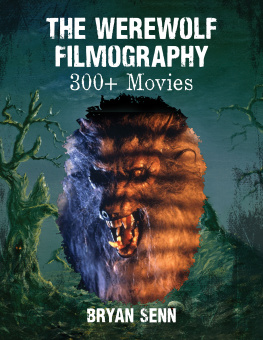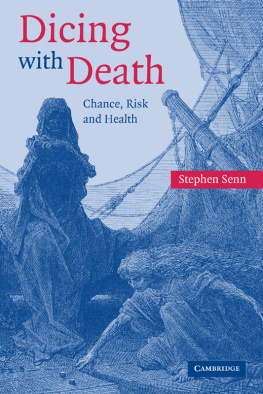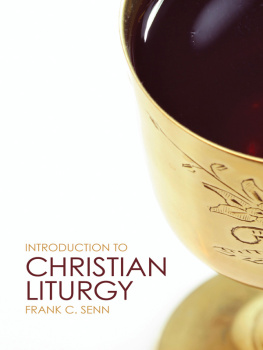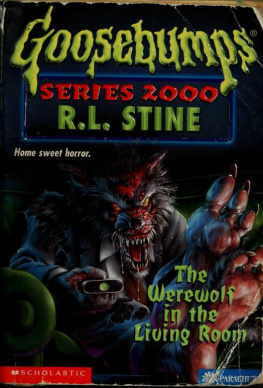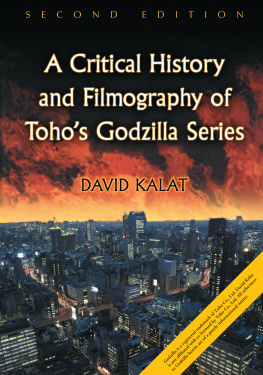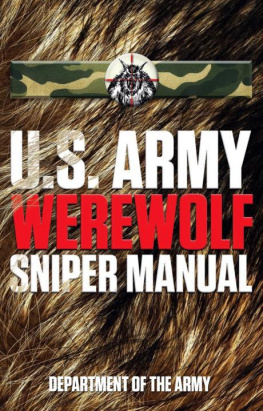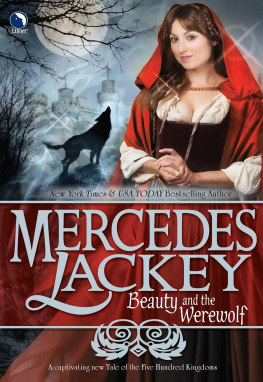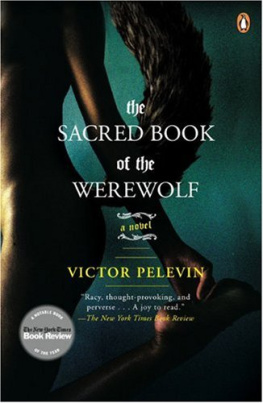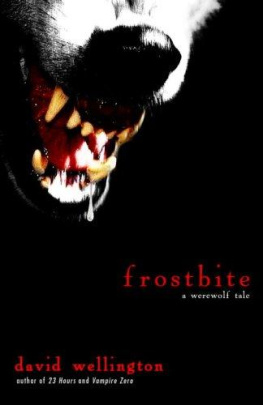Senn - The Werewolf Filmography
Here you can read online Senn - The Werewolf Filmography full text of the book (entire story) in english for free. Download pdf and epub, get meaning, cover and reviews about this ebook. year: 2017, publisher: McFarland & Co, genre: Romance novel. Description of the work, (preface) as well as reviews are available. Best literature library LitArk.com created for fans of good reading and offers a wide selection of genres:
Romance novel
Science fiction
Adventure
Detective
Science
History
Home and family
Prose
Art
Politics
Computer
Non-fiction
Religion
Business
Children
Humor
Choose a favorite category and find really read worthwhile books. Enjoy immersion in the world of imagination, feel the emotions of the characters or learn something new for yourself, make an fascinating discovery.
- Book:The Werewolf Filmography
- Author:
- Publisher:McFarland & Co
- Genre:
- Year:2017
- Rating:4 / 5
- Favourites:Add to favourites
- Your mark:
- 80
- 1
- 2
- 3
- 4
- 5
The Werewolf Filmography: summary, description and annotation
We offer to read an annotation, description, summary or preface (depends on what the author of the book "The Werewolf Filmography" wrote himself). If you haven't found the necessary information about the book — write in the comments, we will try to find it.
Senn: author's other books
Who wrote The Werewolf Filmography? Find out the surname, the name of the author of the book and a list of all author's works by series.
The Werewolf Filmography — read online for free the complete book (whole text) full work
Below is the text of the book, divided by pages. System saving the place of the last page read, allows you to conveniently read the book "The Werewolf Filmography" online for free, without having to search again every time where you left off. Put a bookmark, and you can go to the page where you finished reading at any time.
Font size:
Interval:
Bookmark:

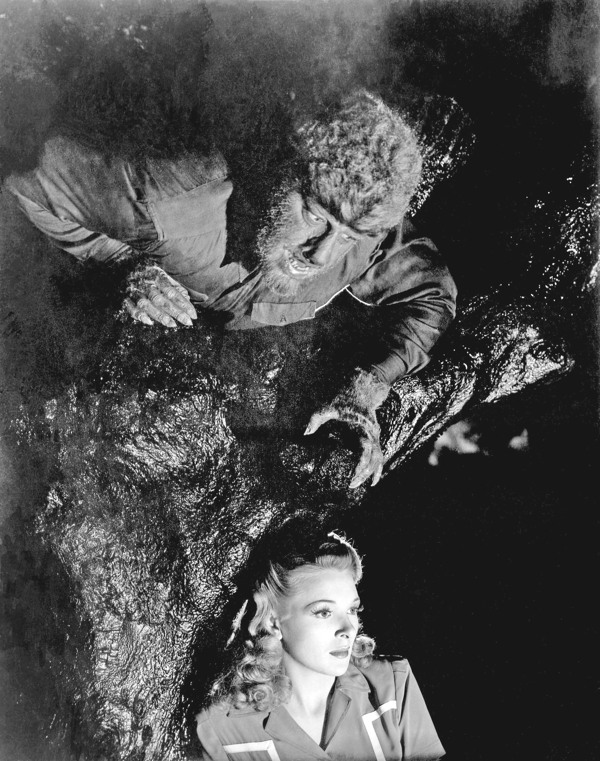
Lon Chaney, Jr.s Wolf Man towers over the werewolf subgenre, just as the iconic Chaney himself towers over heroine Evelyn Ankers in this atmospheric publicity shot for the 1941 film.

McFarland & Company, Inc., Publishers
Jefferson, North Carolina
ALSO OF INTEREST BY BRYAN SENN
AND FROM MCFARLAND
The Most Dangerous Cinema: People Hunting People on Film (2014)
BY BRYAN SENN AND JOHN JOHNSON
Fantastic Cinema Subject Guide: A Topical Index to 2,500 Horror, Science Fiction, and Fantasy Films (2008; paperback 1992)
A Year of Fear: A Day-by-Day Guide to 366 Horror Films (2007)
Golden Horrors: An Illustrated Critical Filmography of Terror Cinema, 19311939 (2006 [1996])
BY MARK CLARK AND BRYAN SENN
Sixties Shockers: A Critical Filmography of Horror Cinema, 19601969 (2011)
e-ISBN: 978-1-4766-2691-8
LIBRARY OF CONGRESS CATALOGUING DATA ARE AVAILABLE
BRITISH LIBRARY CATALOGUING DATA ARE AVAILABLE
2017 Bryan Senn. All rights reserved
No part of this book may be reproduced or transmitted in any form or by any means, electronic or mechanical, including photocopying or recording, or by any information storage and retrieval system, without permission in writing from the publisher.
On the cover: The terrifying wolf-headed horrors createdby Rob Bottin for The Howling, 1981; background Halloween Night 2017 Stanislav Pobytov/iStock
McFarland & Company, Inc., Publishers
Box 611, Jefferson, North Carolina 28640
www.mcfarlandpub.com
For Lynn Naron,
who leads by example through his friendship and generosity.
For the late Mark A. Miller,
an inspiring writer and friend whose support
and encouragement meant more to me than he knew.
And for Gina,
who brings out the wolf in me.
A huge howl of gratitude goes to my generous and supportive group of movie-savvy friends and colleagues whose vast cinematic knowledge helped ease this works sometimes painful metamorphosis (not from man to wolf but from ephemeral idea to written word). They are:
John Gibbon, who once again so generously applied his amazing cinematic detective skills to find the un-findable.
Image-locator extraordinaire (and walking encyclopedia) Ted Okuda, who always goes that extra celluloid mile.
The MillerCon Gang: Anthony Ambrogio, Ron and Margaret Borst, Mark Clark, Dave Harnack, David Hogan, Lenny Kohl, Mark and Teresa Miller, Lynn Naron, Ted Okuda (again), Dr. Nicholas Schlegel, Steve Thornton, and David Walker.
The Fanexians: Anthony Ambrogio, Cindy Collins-Smith, Bruce Dettman, Jonathan Malcolm Lampley, Arthur Lundquist, and Brian Smith.
And the ETP (Eurotrash Paradise) usual suspects: Holger Haase, Bruce Holecheck, Jeff Segal, Adrian Salmon, Bob Sargent, Dan Taylor, Neil Vokes, and David Zuzelo.
A special thank you to the following interviewees for taking the time to answer my lycancentric questions: effects artist Ted A. Bohus, director Freddie Francis, artist Cortlandt Hull (great-nephew of Henry Hull), filmmaker Ricardo Islas, actor Kevin McCarthy, director Fred Olen Ray, actor Germn Robles, screenwriter Curt Siodmak, actress Gloria Stuart, actor Jack Taylor, filmmaker Robert Tinnell, actor William Ragsdale, bestselling author Carrie Vaughn, and propmaker/effects artist George Willis.
Thanks to Erik Wilber, education director at Wolf Haven International (wolfhaven.org), for his illuminations regarding the real canis lupus.
Thanks to my son Dominic, just for being himself (and making his father proud).
And many thanks are due (once again) to my patient wife Gina Beretta, whose perspective, editorial skills, and just plain indulgence so often kept me from simply howling at the moon. (Plus, she agreed to watch all the Twilight movies with me so I wouldnt feel so utterly, awfully, horribly alone. That is true love.)
I think when people go to a horror film, they see a coalescence of their darkest fears in the form of a monster, and its very, very cathartic. Its a pleasure, no matter how horrible it is, to f**king define it, instead of having that amorphous anxiety swirl around you.Filmmaker Mel Brooks
DR. FRANKENSTEIN (hearing howling): Werewolf?
IGOR (pointing): Therewolf.Mel Brooks Young Frankenstein
When I decided to undertake writing a comprehensive book on werewolf movies, I was woefully nave in two respects. One was the massive amount of literature on the topic of werewolves. While the lycanthrope subgenre has no seminal literary text like the vampire (with Bram Stokers novel Dracula), the Frankenstein Monster (originating with Mary Shelleys controversial-at-the-time Frankenstein or the Modern Prometheus) or Dr. Jekyll and Mr. Hyde (via Robert Louis Stevensons classic novella The Strange Case of Dr. Jekyll and Mr. Hyde), werewolves boast a huge body of work regarding not only their myths and legends, but the possibility of their reality. Yes, countless tomes have explored the real-life cases of lycanthropy throughout the ages, starting back before the birth of Christ and continuing up until the present day. Such recent titles as Werewolves: Fact or Fiction?, edited by Angela Cybulski; Hunting the American Werewolf, by Linda S. Godfrey; and even the youngster-targeted TheMaking of a Monster: Vampires and Werewolves, by Kim Etingoff all explore the origin and possible existence of wolfmen. And there are many, many more. Apparently, readers even in this modern age are enthralled by the concept of a man (or woman) transforming into an animal.
The other surprise was the sheer volume of lycanthrope movies that have been made in the last 100 yearsfar more than I ever suspected before I started digging into werewolf cinema in earnest. Id seen all the Universals from the thirties and forties, the smattering of independents from the fifties and sixties, and the myriad Paul Naschy imports from the seventies and eighties (a boon decade for werewolves with the release of such lycan-classics as An American Werewolf in London, The Howling and the underrated Silver Bullet). Id even caught up with a few more recent efforts, such as the lauded Ginger Snaps and the thrilling Dog Soldiers. But nothing had prepared me for the sheer numbers of wolfmen (and women) that spilled forth in the 21st century. Along with the vampire and zombie, it seems that the werewolf has caught our modern zeitgeist in its jaws and worried it almost to death. More than half of all werewolf films have been produced since the turn of the millennium.
While I searched for a title for this book, a witty friend of mine acerbically suggested Two Hundred Sucky Movies and Eight Good Ones. A better response, however, would be that the werewolf mythos is obviously an important one to our culture, given the sheer volume of lycan-centric films produced over the last century (not to mention the explosion of werewolf novels, TV series, and video games). Second only to the vampire subgenre, the werewolfs popularity far outstrips such fellow horror icons as Jekyll and Hyde, the Frankenstein Monster and the Mummy. And werewolf cinema has given us its fair share of classics, tooinnovative, groundbreaking and enthralling films like
Next pageFont size:
Interval:
Bookmark:
Similar books «The Werewolf Filmography»
Look at similar books to The Werewolf Filmography. We have selected literature similar in name and meaning in the hope of providing readers with more options to find new, interesting, not yet read works.
Discussion, reviews of the book The Werewolf Filmography and just readers' own opinions. Leave your comments, write what you think about the work, its meaning or the main characters. Specify what exactly you liked and what you didn't like, and why you think so.

